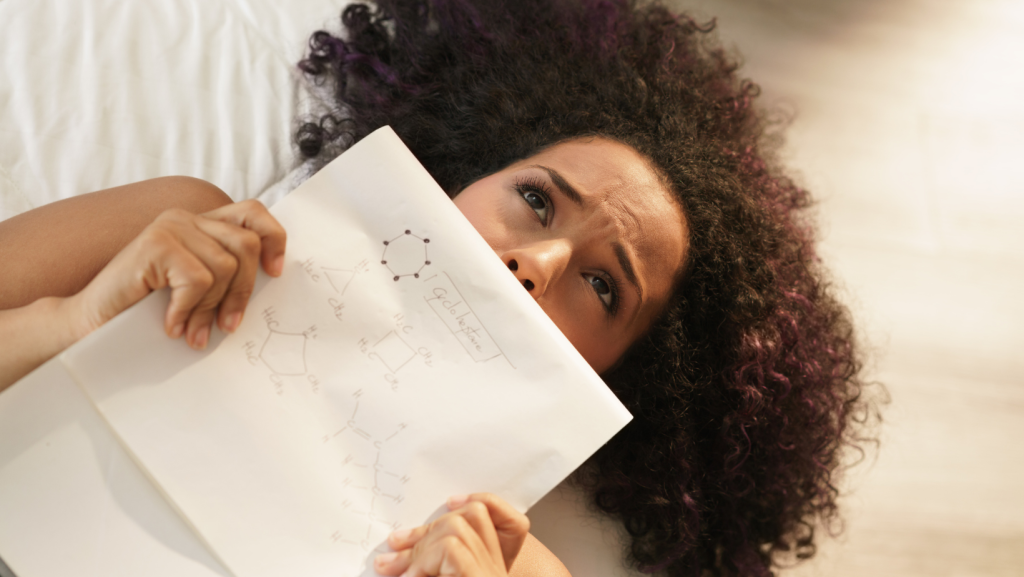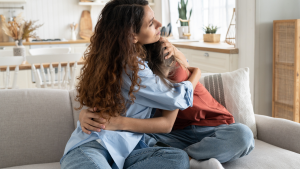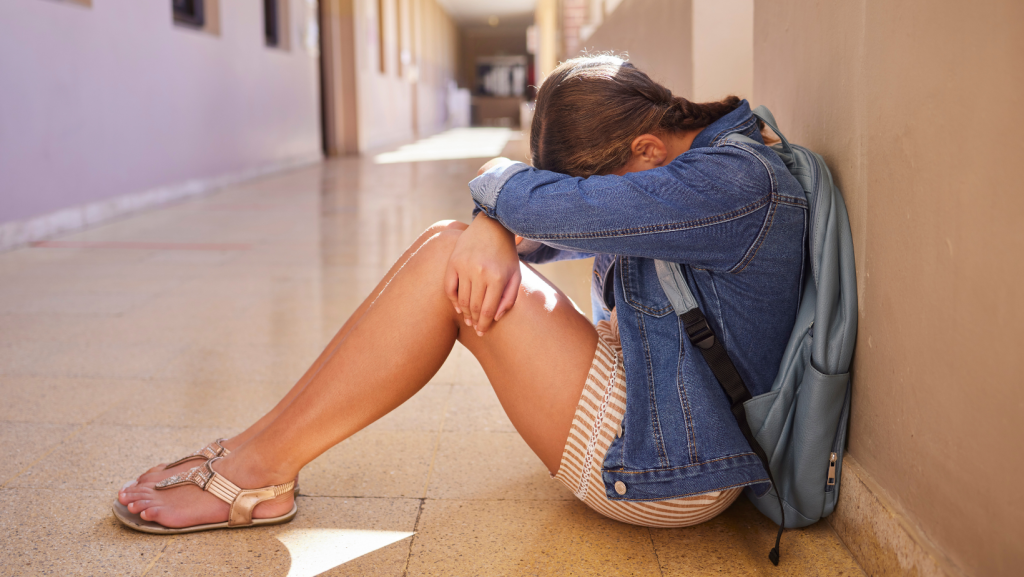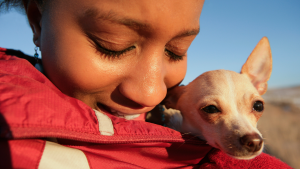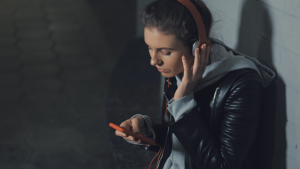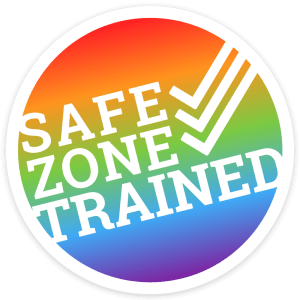In these times with uncertainty in a world that is changing more rapidly than we can sometimes imagine, knowledge can be like medicine.
If you are a child or teen impacted by anxiety or you are caring for someone with anxiety, I hope this blog will provide you with some helpful information.
Lets Start From The Beginning – What Is Anxiety?
Well anxiety is a state caused by your perceived sense of threat to an event, person, or situation. In other words, anxiety is a combination of thoughts and feelings that activate your Stress Response, calling your body and mind to take action to try and keep you safe and minimize threat and danger.
When put that way, I kind of think of anxiety as a superpower. A superpower that every human being has.
If anxiety can activate your body’s stress response, putting you in a state of action, and doing this in a matter of mere seconds- that’s pretty impressive!

Photo by Canva
I want to say a little more about how anxiety is useful. We can probably agree that everyone experiences stress at some point. Perhaps you even agree that our stress response to perceived danger and threat is one very important way to keep you safe.
Our body and mind’s response to danger is part of your evolutionary hardwiring for survival- this is most useful if the goal is to live.
The response is automatic, meaning you don’t have to think about activating your stress response. If a rabid tiger (do tigers get rabies?) ran into this room right now, you would not want to waste time thinking about whether or not it is dangerous or what you should do. You need to act right away and that’s what anxiety helps you do- ACT NOW.
Anxiety is useful in the tiger situation, but let’s face it, you may not encounter this scenario too often. Anxiety can also be useful in handling situations that require some stress for best outcomes. A situation like a performance, maybe a sports performance or an art performance require some degree of stress to mobilize memory, muscles, blood flow, and breathing.
Anxiety can be useful and it can also become problematic and I will talk more about that below.

Keypoints to remember:
- Everyone experiences stress and anxiety some of the time
- Anxiety is like a superpower designed to detect and respond to perceived threat and danger
- Our stress response is automatic and it happens in mere seconds
- Anxiety in doses, can be useful for performance
The world you live in today is much different than the world of 50 years ago. You experience stimulus at a much faster rate. Take a second and think of how many sources of information and the amount of information coming at you, even in the last 30 minutes.
I have probably checked my emails (yes more than one), glanced at instagram, received text messages from people I know, half read a couple articles that piqued my interest on Facebook, all while eating a burrito and petting my dog. This statement gives you plenty to judge me on, but I’m hoping to highlight that we live in a world with a lot going on a lot of the time.
Why Is It Important To Talk About Anxiety These Days?
Your body and mind need to sift through information (stimuli) at lightning speed and determine what is a threat and what is not. That’s a taxing job, even for a superpower.
Research tells us that severe anxiety and mood disorders are on the rise in young populations. We need to talk about anxiety so we can come together as a community, share ideas, support one another, and create spaces and states that feel safe.
It’s also important to talk about because stress and anxiety have larger consequences on the body and mind if not attended to. Stress has different levels, one of those being adaptive stress or as some call it, healthy stress. This kind of stress causes a response in your body that has quick recovery times which is great because you can manage that. Prolonged stress or toxic stress however, is more taxing on the body and mind and has slower recovery times which can cause significant negative consequences to your health.
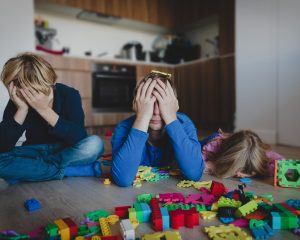
Photo by Canva
Key points to remember:
- Our mind is sifting through enormous amounts of stimulus at lightning speed to determine what is a threat and what is not.
- Research tells us severe anxiety is on the rise in young populations
- Prolonged or toxic stress can have long term consequences on your health
What Does Anxiety Look Like?
Ok, remember anxiety is a state that activates a response in your body to perceived danger or threat. That response brings on-line our sympathetic system, which is also known as the flight, fight, freeze response. This is a survival response that mobilizes your body to take actions required to keep you out of danger.
You might notice:
- Increased heart rate
- Shallow, quicker breathing
- Increases in some of your senses (smell, sight)
- Dilated pupils
- Distributed blood flow to certain parts of the brain and muscles

Photo by Fernando @dearferdo on Unsplash
Now if you continue to have anxious thoughts and feelings, the body continues to mobilize resources, but has to make some changes to sustain this flight, fight, freeze mode.
Now your system is:
- Releasing cortisol (stress hormone)
- Suppressing pain response
- Reduces hearing
- Increasing activity in the amygdala (alarm system in brain) and hippocampus (memory bank of brain)
- Decreasing activity in pre-frontal cortex (planning and reasoning part of brain)
- Increasing blood clotting activity
- Interfering with sleep
- Suppressing immune system
Keep in mind your stress response is proportional to the degree of perceived threat. If you think something is super dangerous, your body and mind will respond in a big way!
Also, the longer your body and mind are sustained in an anxious state the longer the recovery time. This part is really important. If you imagine anxiety as a superpower and you use it all up to deal with your nemesis DANGER and THREAT, you are going to need time to rest and rebuild your energy stores.
Key points to remember:
- Anxiety triggers your sympathetic system (flight, fight and freeze)
- Anxiety and stress require recovery time
- The bigger the stress response, the longer the recovery
Different Types of Anxiety
Anxiety in and of itself is a very useful state to have to keep us safe and responsive. However, when anxious thoughts and feelings lead to symptoms that interfere with day to day functioning it can become problematic.
Anxiety disorders can be a way of labelling when anxiety becomes problematic.
Some types of anxiety known in children and teens:
Phobias
Experiencing very anxious and fearful thoughts and feelings, often irritational, linked to situations, objects, or things. More common phobias are dying, flying, spiders, vomiting, needles, etc.
Separation anxiety
Experiencing very anxious thoughts and feelings when separated from parents or caregivers. Usually feeling worried that something bad will happen to self or someone you love while you are apart. May result in refusing to participate in playdates, school, daycare, camps, or sleepovers.
Social anxiety
Experiencing very anxious thoughts and feelings related to social situations. Heightened stress and self-consciousness around others with strong worries about being embarrassed, humiliated, or judged.
Generalized Anxiety disorder
Experiencing very anxious thoughts and feelings about everyday events for prolonged periods.
Panic disorders
Experiencing sudden and unexpected panic attacks. You would also experience very anxious thoughts and feelings about having another panic attack in public or in undesirable situations and usually avoid places where a panic attack might occur.
PTSD
PTSD (posttraumatic stress disorder) is when you experience ongoing symptoms after a terrifying event(s). Usually experience very anxious and frightening thoughts and memories of the past event(s). The event(s) was/were terrifying to you physically, emotionally, and psychologically.
OCD
OCD (Obsessive-Compulsive Disorder) has two parts- obsessions, which are persistent, intrusive and unwanted thoughts, images or impulses (urges) and compulsions, which are repeated behaviours that can decrease the anxiety temporarily. Often, you may know the obsessions are irrational or unconventional but unable to control them. Some common compulsions may include, washing, checking, repeated walking patterns, touching, counting.
Key points to remember:
- when anxious thoughts and feelings lead to symptoms that interfere with day to day functioning (for many different reasons) it can become problematic.
- Anxiety disorders are a way of labelling when anxiety becomes problematic
How To Cope

Photo by TK Hammonds on Unsplash
If anxiety is just doing its thing and keeping you away from danger, this is great. Thank anxiety for being such an amazing superpower and keep it up.
If this superpower is out of control and interfering with daily life, there are things you can do to harness its energy.
If you want to talk to someone about what’s going on or you have more questions, consider reaching out to a healthcare professional or another trusted adult. It may be a parent, family friend, coach, doctor, school counsellor, therapist, etc.
Don’t suffer alone!
Here are some ideas that might help harness the power of anxiety.

Photo by Canva
Grounding and settling:
Finding a way to settle your body and mind is like adding water to a flame- it can soothe and lower your anxiety response. A lot of these ideas start with the body and are designed to kick in your parasympathetic system (rest and relax) which is the opposite of the sympathetic system that kicks in when you are anxious. Some examples of this are:
- Focused breathing
- Tense and release exercise
- visualizations
- Stretching and yoga movements
- Sensory exercises to bring you to the here and now (54321, rainbow spotting, hearing challenges, etc.)
- Brain gym
- Calming art or music
Self-Compassion:
Often times, you might find yourself having harsh thoughts about anxiety. It can be easy to go to a place of what’s wrong with me, why can’t I control this, this is my fault etc. Self-compassion is an invitation to bring in a gentler, kinder voice (maybe like a kind friend or a great sidekick) that can offer some new possibilities in understanding and handling anxiety. Some examples of this are:
- Mindfulness exercises
- Compassion and kindness exercises
- Exploring feelings with curiosity rather than judgement
- Art to help explore
Thought work:
Anxiety is about your perceived sense of threat or danger, so it is not necessarily the truth of how things are but rather how you think they are. If you have ways to understand and challenge your thoughts this can be very helpful in harnessing anxiety. Some examples of this are:
- Mapping your thoughts
- Thought ladders
- Thought stopping
- Thought challenging
- Understanding thinking traps
Containment:
Imagine (I know I’m really going with this superpower metaphor) anxiety is a powerful ray of light that shoots from your body uncontrollably anytime you feel you are in danger. Containment is a way to centralize and focus that beam of light to one area or to keep it locked up for a bit while you work on some other harnessing strategies. Some examples of this are:
- Worry boxes
- Worry trees
- Things I can control and things I can’t control exercises
- Container visualizations, imagery, art

Photo by Dustin Belt on Unsplash
Habits and Hygiene:
Just like anything in life, if we are well rested and refreshed, we tend to show up in a much more capable way vs. when we are feeling exhausted and depleted. Considering the different habits and different hygiene practices you have can be very helpful in harnessing anxiety. Some examples of this are:
- Having consistent quality sleep
- Eating regularly and eating foods high in nutrients and vitamins
- Having routines that are supportive like around bedtime or when you first wake up
- Bringing supportive relationships closer and distancing self from harmful relationships
- Having regular self-care practices such as sport, art, exercise, spending time with friends, laughing, relaxing, etc.
- Limiting alcohol and drug use which mess with our body chemistry and can quickly make anxiety feel out of control
Key points to remember:
- There are so many different things you can do to help harness anxiety
- Don’t suffer alone, talk to someone if you are struggling with anxiety

Photo by Jude Beck on Unsplash
If you found this post helpful, pass it on by emailing a friend or sharing it on Twitter or Facebook- Thanks!
Comment below on how you manage anxiety.

Chantal Côté (she/her) is a psychologist and teen life coach living in Calgary, Alberta. After over a decade in non-profit and community mental health, Chantal started Pyramid Psychology, a practice dedicated to supporting teens – a population she is constantly amazed by. Chantal is on a mission to help 100,000 teen girls (and their parents) build bulletproof mindsets so they can weather the ups and downs of life. As part of this goal, Chantal has had the privilege of speaking at various events – virtual and live – to support teens and parents.
Outside of this passion, Chantal is often in nature, writing poetry, playing ball hockey and hanging out with her loved ones.
Each week, Chantal writes a blog article in response to issues she hears from the parents and teens she connects with.
If you have something you’d like to read more on – email ideas and questions to info@pyramidpsychology.com or DM us via Instagram or Facebook.


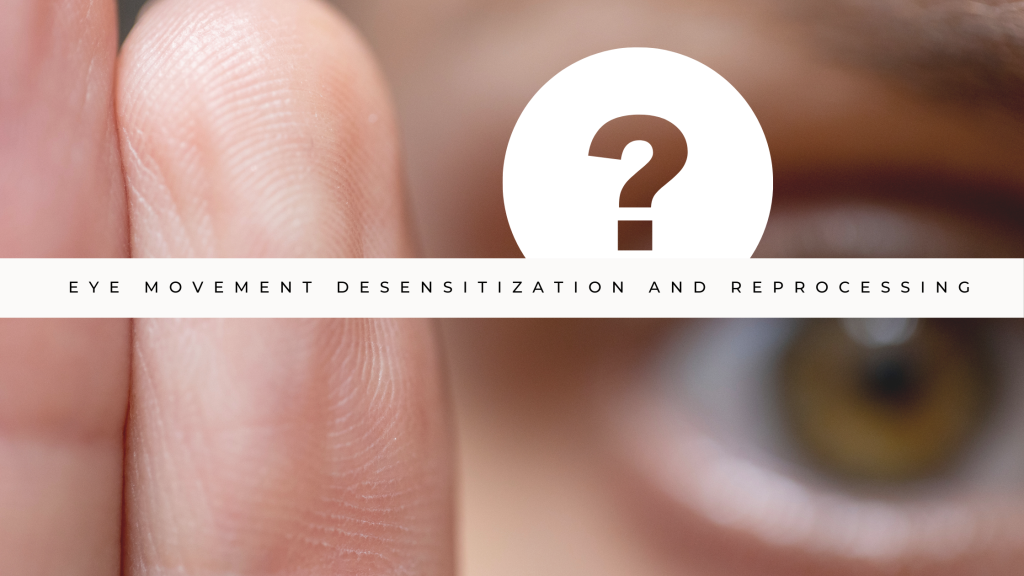





 Hello, my name is Tara, and I am a graduate student in counselling, I will be doing my practicum at Pyramid Psychology and I am very excited to practice all the skills I have learned as well as develop new relationships.
Hello, my name is Tara, and I am a graduate student in counselling, I will be doing my practicum at Pyramid Psychology and I am very excited to practice all the skills I have learned as well as develop new relationships.















 I am a registered social worker with a Bachelor of Social Work with a major in psychology from the university of the Western Cape, and a Master’s in Clinical Social Work specialization with individuals, families, and groups from the University of Calgary.
I am a registered social worker with a Bachelor of Social Work with a major in psychology from the university of the Western Cape, and a Master’s in Clinical Social Work specialization with individuals, families, and groups from the University of Calgary.






